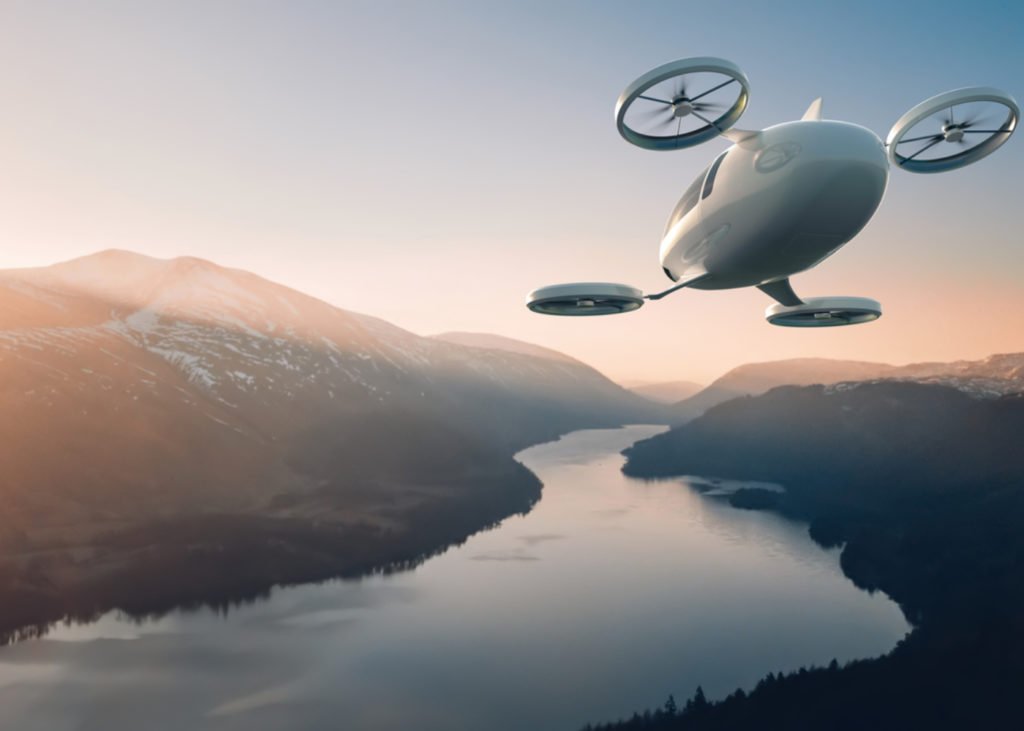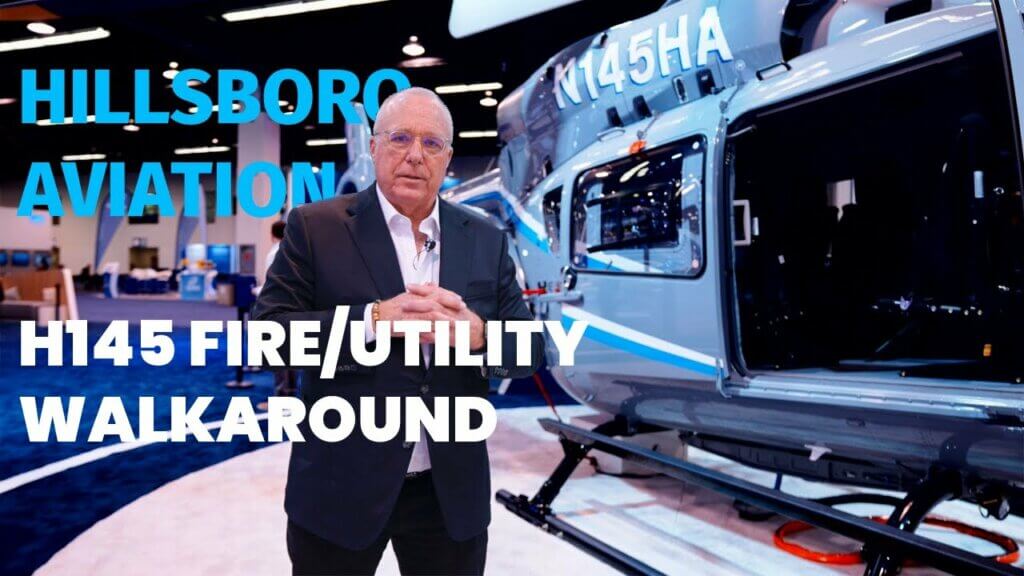The nascent eVTOL industry originated last decade with the onset of a technology discontinuity in aerospace engineering — in particular, the ability to use electrical energy as the prime energy source for flight.
The industry was formed in response to society’s expectation for more ecologically sustainable travel and transportation options, coalescing with several empowering technologies, as well as quick and inexpensive digital engineering methods. This was in addition to the supply of venture capital realized through favorable government economic policies.

Grasping a barely feasible technology discontinuity, the eVTOL industry moved propulsive power generation from fossil fuel sources to new technological S-curves of high voltage electrical power systems, using batteries of sufficient energy density for viable electric flight.
This technology has made eVTOL market offerings possible as a mode of transportation that itself is a disruptive change in mobility, creating massive economic and ecological benefits. But the journey to arrive where we are today has not been straightforward.
Entrepreneurial eVTOL aircraft primes gained insight by exploring technology and business models. The application of digital engineering created prototypes with more features and complexity, shaping the future of mobility.
The eVTOL primes have used agile and lean development methods to create minimum viable products, while discovering and validating their target customer and pivoting their product to find the correct market fit. Successful eVTOL primes will have identified their winning point of difference among competitors.
Concurrently, the industry discovered potential business models to explore in this uncertain and ambiguous domain, and industry stakeholders had to form achievable and attractive goals prior to committing to a business model. A recent boom in business jet use suggests unmet demand for affordable interurban flights via eVTOL.
Challenges of pioneering
The exploratory nature of eVTOL discovered the engineering challenges which can be married to the known engineering principles we see in traditional aerospace and electrical disciplines.
From an external perspective, safety and noise are the biggest concerns for public acceptance of eVTOL flights. Rotor noise can largely be mitigated by design choices and appropriate operation procedures during approach, departure, and flight path routing, including vertiport location. But the foremost concern for any business or organization is safety — an issue that the aviation industry is particularly skilled at analyzing and minimizing.
From an engineering perspective, eVTOLs make an excellent safety case. The inherent features of multirotors, dual motors, and multiple power cells, as well as the reduced complexity of multiphase systems, such as fuel, hydraulics, pneumatics, and electrical, to perhaps only one system makes excellent sense.
Components themselves must contribute to the structural system safety in order to achieve an equal to or greater than failure rate of 10-9 per hour for commercial aviation.
Reassuringly, there were no airline passenger fatalities in seven years during the 2010s, according to U.S. statistics during that decade. However, general aviation (GA), with less severe safety demands and greater proportional aircraft movements, averaged around six accidents per 100,000 hours — 34 times greater than Part 121 air carriers.
With the expected large number of aircraft sharing the airspace, it can be argued that commercial eVTOL aircraft will need an even greater prevention of failure than current commercial aerospace, and should never be treated as GA. A catastrophic failure early in eVTOL usage could cause its demise before it is even established.
The use of aerospace grade components, particularly in the novel application of relatively high-voltage electrical power cables and connectors, high-voltage switching equipment in the power distribution systems, and connectivity in electrical energy storage, is paramount to help ensure safety. Aerospace components are designed to perform in rugged environments with qualification and certification artifacts, often with years of relevant demonstrable “time on wing.”
Consensus of electrical standards for eVTOL are lagging while the primes move rapidly to develop their aircraft, even though concerted effort is being made by the authorities. For example, aerospace has traditionally identified critical systems and components specifically to manage the life stages of particular components where failure consequences could result in the sudden loss of an aircraft.
Every stage — from raw material sourcing, manufacturing, operation, and disposal — is recorded, and deviation is controlled and traceable. In eVTOL technology, it has been suggested that battery packs follow this process.
Solutions to eVTOL challenges will advance as greater knowledge is gained through flight tests and entry into service. If traditional design margins are eroded for mass and size benefits, advanced fault detection through health usage monitoring systems and prognostic health monitoring using electrical and fiber optic sensing systems may be necessary to justify some eVTOL safety cases.
Integrated fiber optics has additional advantages given its dissimilar signal media when employed as fly-by-light connectivity for flight control and avionics. It avoids electromagnetic interference — a pertinent consideration in high-frequency, high-voltage, and closely packed electrical systems where fiber optic systems also have significant bundle size and mass benefits.
The challenge is the switch to new design and assembly philosophies.

Engineering electrical connectivity challenges
The mission profiles and power systems of eVTOLs currently in development are somewhat similar — limited by the inherent restriction of energy density in the cells and battery pack.
One of the most competitive advantage the primes can seek is improving the cell electrical packaging architecture and technology, and of course, cell chemistry. Arguably, another important subsystem in eVTOL is electrical connectivity and the transmission of power from the energy source to the propulsive effectors.
The efficient transmission and control of the limited energy stored on eVTOL aircraft in a new distributed architecture of the power system is fundamental to the success of electric aircraft. While the voltages seen in eVTOLs are not relatively high compared to other transport modes, the application at altitudes of around 4,000 meters (13,100 feet), with minimal mass, small volumes, and even conforming shape factors, contribute to novel solutions for this domain.
These connectivity challenges can be grouped into themes.
Electrical challenges
- Preventing partial electrical discharge along electrical wires by increasing partial discharge inception voltage (PDIV): Need to minimize voids and cavities, and corona effects (an ionization phenomenon of air around the wire) that has the capability of degrading insulators and causing systems to fail through insulation breakdown and electrical treeing. Selecting materials with dielectric properties suited to high voltage conditions, such as corona-resistant polytetrafluoroethylene (PTFE), can minimize risks of corona forming.
- Encountering critical voltage stresses: Need to use appropriate techniques that protect against different voltage gradients, such as minimizing air ionization with large pin radii, sufficient clearance distance between pins, and maintaining adequate creepage distance as measured on the insulation surface.
- Avoiding arc tracking damage: Need to minimize breaches of wire insulation material to avoid electrical arcing between wires by preventing formation of carbon tracks that result in reduced dielectric properties.
- Handling high network operating voltages (>3kV DC): Need to select relay and contactor components that can withstand extreme electrical stress of propulsion motor power switching and battery charging control, while in high-shock and vibration environments.
- Dealing with skin effect (the tendency of current to flow near the surface): Need to minimize opposing eddy currents, induced by the changing magnetic fields of alternating current that increase the effective resistance of conductors at higher frequencies.
Power management challenges
- Handling power management: Need to use high-frequency switching (often hermetically sealed) to enable rapid bus transfer in the event of power loss. Fixed-frequency 400 hertz AC power enables smaller and lighter transformers and motors — and faster transfer of bus power if power is lost. Modular power distribution units or backplane-type panels can be customized for the various configurations of eVTOL applications.
- Using hybrid electromechanical and solid-state power switching technologies: Need to evaluate the optimal use case of both, such as solid state’s ability for silent switching, low electrical interference, functionality over a wide range of input voltages, low power consumption, and no electrical arcing, compared to electromechanical switching’s greater ability to tolerate heavy surge currents or spike voltages.
Thermal challenges
- Managing thermal issues: Need to dissipate heat in composite structures, which can be difficult to create a stable electrical/electronic environment given temperature sensitivities on pick-up voltage and coil resistance in wire and relay equipment — key factors in the electrical system design.
- Battery charge cycles: Need to enable higher energy transfer rates by optimizing heat distribution and balance, and avoiding thermal bottlenecks by carefully designing cable attachments, contact interfaces, and contact materials.

Balancing eVTOL counter demands
The eVTOL primes, in particular startups, have been encouraged by investors and owners to bring democratized transport to reality — and quickly before their competition — while uncertainty in the eVTOL industry has driven high agility and flexibility during their technical development. One business constant has been the competitive pressures to acquire resources — not just funding from investors but also talent and supply chain support.
The demands placed on the supply chain have been to source available components and subsystems that meet the racing timeline for demonstrable progress. Availability of existing components within desired performance and mass specifications have outweighed longer term development of optimized components. Time will tell if hare or tortoise wins this race.
In aerospace, controlling component size and mass to meet physical constraints is a fundamental element in successful aircraft design. Current small eVTOL aircraft suffer two physical disadvantages over traditional commercial aircraft.
Firstly, as aircraft size reduces, useful payload fraction also reduces. Simply put, proportionally more of the aircraft is required just to keep it flying, which is exacerbated by the relatively poorer energy density of battery technology. Secondly, smaller bodies have proportionally lower volume to surface ratio. Consequentially, eVTOL aircraft will likely see components that are not just smaller but flatter.
A major difference to traditional aerospace will be realized as the domain becomes successful. The production rate of eVTOL aircraft in a mature market will be closer to automotive production than aerospace. The eVTOL primes are forecasting production rates that are up to seven times that of the highest build rate experienced in commercial aircraft production.
A change in manufacturing technology, as well as a design for manufacture and assembly in aerospace, will be needed to support the industry. It is no wonder that similarity is made to the electric automotive industry with pressures to adopt its components due to ease of availability, as well as cost. This pressure will grow in the maturing eVTOL market, but aerospace standards of manufacture and safety performance must be maintained.
Reaching the optimum balance will be resolved over time as evolving generations of aircraft are developed.

The exciting future
The aerospace industry can learn to embrace the business model that eVTOL startups have employed so effectively to develop new product and service offerings. The disruptive eVTOL domain may be the most powerful environment for innovation, with the potential to not just revolutionize the way society travels but also how engineering and business designs for safety critical systems.
Over their development journey, eVTOL primes have employed effectual reasoning — understanding the business environment and adapting to opportunities that present themselves through available technical and organizational resources.
Business and technical uncertainty have been ameliorated by partnering early with technology and infrastructure companies, which have multiple purposes of creating technology development efficiencies, and furthering technology discontinuities, robustness, and entry barriers to competition.
Following this first generation of eVTOL aircraft, the improving iterations of second and third generations will use emergent technologies that would not otherwise have been foreseen. We can expect autonomous vehicles with integrated power management and multiple physical functionalities of electrical components to save space, mass, and installation build effort. The supply chain and technology innovators will employ the iterative methods of the innovation lifecycle while they and the industry form potential business models.
The eVTOL domain began with entrepreneurs — now engineers — and business must work to discover and solve the complexity of challenges for eVTOL products and the ecosystem as reality dawns.
Martin Cullen is a senior business development manager and the global eVTOL lead at TE Connectivity (TE). With a masters in aerospace, masters in project management, MBA candidate, 23 years of experience in the aerospace industry, and a private pilots license, Cullen is responsible for defining TE’s strategy for the emerging aerospace markets. He works with TE’s engineers, product managers and commercial team on electric and fiber optic systems and components to continue to grow TE’s capabilities and business.









